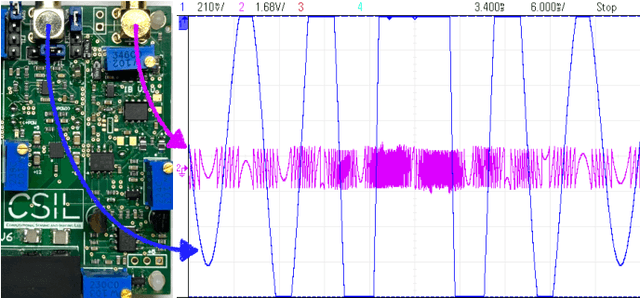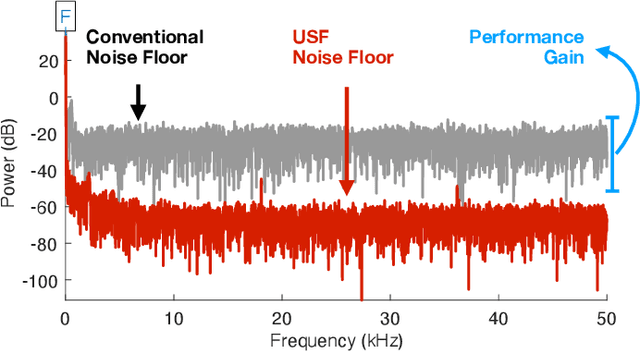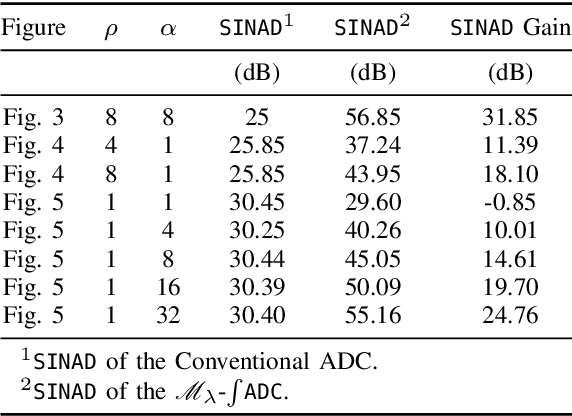Unleashing Dynamic Range and Resolution in Unlimited Sensing Framework via Novel Hardware
Paper and Code
Oct 26, 2024



Conventional digitization based on the Shannon-Nyquist method, implemented via analog-to-digital converters (ADCs), faces fundamental limitations. High-dynamic-range (HDR) signals often get clipped or saturated in practice. Given a fixed bit budget, one must choose between minimizing quantization noise or accommodating HDR inputs. The Unlimited Sensing Framework (USF) eliminates saturation by incorporating nonlinear folding in analog hardware, resulting in modulo signals. Quantizing or digitizing modulo signals enables low quantization noise as the modulo representation maps HDR signals into low-dynamic-range (LDR) samples. In the context of USF, the core innovation of this paper is a novel, low-cost, integrator-based efficient modulo ADC hardware implementation that imposes no restrictions on folding rates, enabling significantly HDR capture. The feasibility of this design is demonstrated by hardware experiments showcasing clear advantages across different quantitative performance metrics. These include capturing HDR signals with a 60-fold increase in dynamic range, achieving up to 5 Effective Number of Bits (ENOBs), and improving Signal-to-Noise and Distortion (SINAD) by 30 dB.
 Add to Chrome
Add to Chrome Add to Firefox
Add to Firefox Add to Edge
Add to Edge